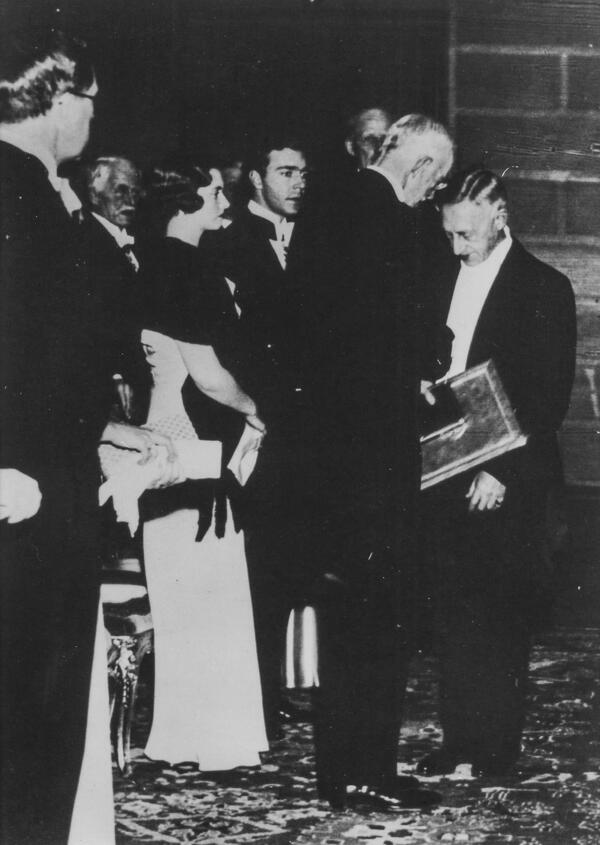For the first time, Ivan Bunin’s candidacy for the Nobel Prize was nominated in 1922 by the French writer Romain Rolland. However, the Nobel Committee appreciated the writer’s merits only ten years later, in 1933, after Bunin published his lyric-autobiographical novel ‘The Life of Arseniev’. The classic believed that it was for this book he received a prestigious award – however, in the Decision of the Swedish Academy, no specific Bunin’s work was listed. The document stated that “The Russian writer Ivan Bunin received the Literature Prize for 1933 for his true artistic talent, with which he recreated a typical Russian character in fiction”.
The award ceremony was held the same year in Stockholm, where the writer arrived with his wife Vera Muromtseva and some friends. Poetess Galina Kuznetsova, who also accompanied Bunin, recalled: “At the train station in Stockholm, a crowd, Russian and Swedish, greeted us. Some Russian made a speech, brought “bread and salt” on a silver dish with an embroidered towel’.
As the foreign press noted, the writer accepted the prize from the hands of the Swedish King Gustaf V with exceptional dignity and restraint: ‘The king of literature confidently and with equal rights shook hands with the crowned monarch’. The laureate diploma awarded to Bunin was different from others: his folder was not the traditional blue, but light brown. The cover was decorated with two pictures painted by artist Berta Svenson in the Old Russian style. It was a kind of sign of respect from the Nobel Committee.
Bunin himself recalled the award ceremony as follows: ‘Each laureate, after reading an essay about him/her, received from the hands of the Swedish King Gustaf V a folder with a Nobel diploma and a case with a gold medal, the image of Alfred Nobel was engraved on one side of medal and the name of the laureate was on the other… In the ensuing deep silence, I slowly walked across the stage and I slowly walked down its steps to the King, who had risen to meet me… He greeted me and all Russian literature represented by me with a particularly gracious and firm handshake’.
The award ceremony was held the same year in Stockholm, where the writer arrived with his wife Vera Muromtseva and some friends. Poetess Galina Kuznetsova, who also accompanied Bunin, recalled: “At the train station in Stockholm, a crowd, Russian and Swedish, greeted us. Some Russian made a speech, brought “bread and salt” on a silver dish with an embroidered towel’.
As the foreign press noted, the writer accepted the prize from the hands of the Swedish King Gustaf V with exceptional dignity and restraint: ‘The king of literature confidently and with equal rights shook hands with the crowned monarch’. The laureate diploma awarded to Bunin was different from others: his folder was not the traditional blue, but light brown. The cover was decorated with two pictures painted by artist Berta Svenson in the Old Russian style. It was a kind of sign of respect from the Nobel Committee.
Bunin himself recalled the award ceremony as follows: ‘Each laureate, after reading an essay about him/her, received from the hands of the Swedish King Gustaf V a folder with a Nobel diploma and a case with a gold medal, the image of Alfred Nobel was engraved on one side of medal and the name of the laureate was on the other… In the ensuing deep silence, I slowly walked across the stage and I slowly walked down its steps to the King, who had risen to meet me… He greeted me and all Russian literature represented by me with a particularly gracious and firm handshake’.



